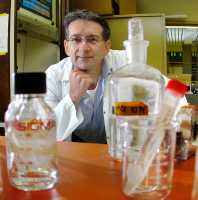Author Interviews, Cognitive Issues, Dental Research, Geriatrics, Kidney Disease / 05.08.2016
Poor Oral Health in Hospitalized Patients Associated With Dementia and Kidney Disease
MedicalResearch.com Interview with:
Danielle Mairead Maire Ni Chroinin,
MB BCh BAO BMedSc MD MRCPI FRACP
Staff Specialist in Geriatric Medicine
Liverpool Hospital and Senior Conjoint Lecturer UNSW
MedicalResearch.com: What is the background for this study? What are the main findings?
Response: Oral disease may have a large impact on older persons’ health and wellbeing, causing pain, impairing speech, adversely affecting nutrition, contributing to systemic infection and harming self-esteem. However, this important issue may be neglected in the acute hospital setting. Our aim was to investigate oral health status and abnormalities in older patients admitted acutely to hospital, exploring the association with medical co-morbidities. We included all individuals aged 70 and older admitted to a geriatric service over 3 months (N=202), and evaluated oral health using a simple bedside tool the Oral Health Assessment Tool (OHAT).
Overall, we found that poor oral health was not uncommon, and was associated with dementia and renal impairment. This association persisted even after adjustment for anticholinergic medication and oral pH, highlighting that patients with these conditions may be particularly vulnerable.
(more…)














